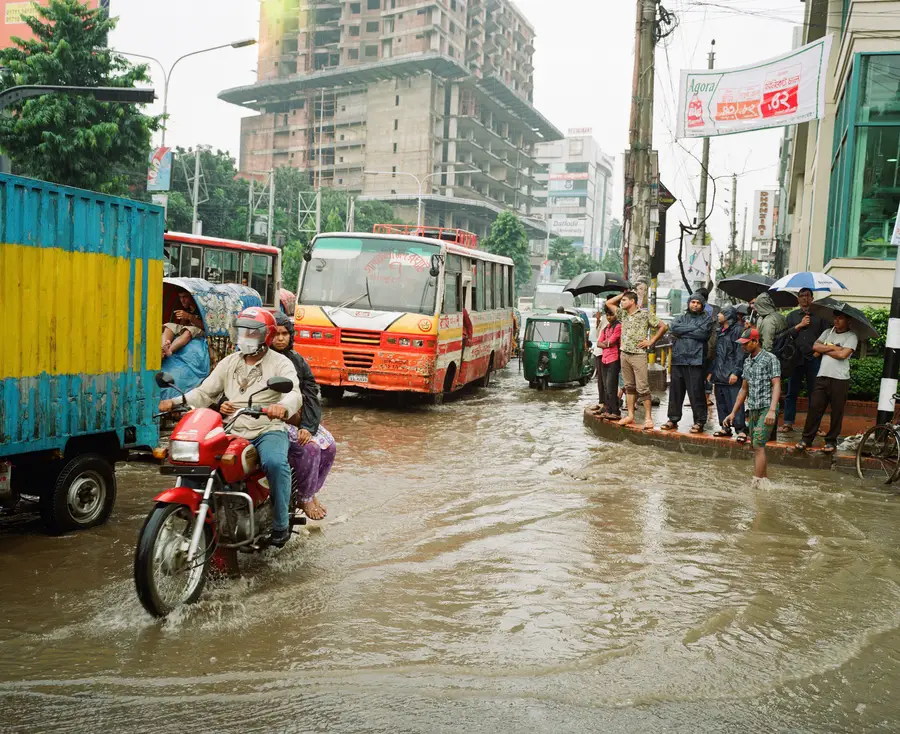
Flooding in Libya and Pakistan. Drought and locusts in Ethiopia. The global COVID-19 pandemic. Disasters like these are a fact of life – and they’re becoming more common, more intense, and more costly because of rapid urbanization and climate change.
Cities are particularly vulnerable to disasters: Half of the world’s population currently lives in cities and two-thirds will by 2040. The concentration of people and infrastructure in cities heightens their vulnerability, as do societal factors like economic disparities and unequal access to resources. The scarcity of green spaces in urban environments also contributes to challenging conditions like urban heat islands, air pollution, and limited natural protection against floods, which compound disaster risks.
As people continue to migrate toward urban centers, the vulnerability of cities to various calamities is projected to escalate. Urgent action is needed to address these issues.
Since 2015, the United Nations (UN) Sendai Framework for Disaster Risk Reduction has helped countries enhance their risk knowledge, improve governance mechanisms such as national and subnational disaster risk strategies, and increase investment in monitoring measures like hydrometeorological services. However, many cities, especially those in low- and middle-income countries, are still inadequately ready to mitigate, prepare, and respond effectively to disaster risks.
In this blog, we highlight three key areas that can improve a country’s disaster preparedness and response capabilities before, during, and after disasters occur.
1. Mainstream urban resilience
According to the Sendai Framework’s mid-term review in 2023, the majority of UN member countries still lack the institutional and governance mechanisms needed to promote informed decision-making for reducing risk. Municipal governments must mainstream resilience into urban development planning to transcend the constraints of limited government coordination that result from these gaps. Clear institutional frameworks that promote service delivery and accessible data for evidence-based decision-making can facilitate this mainstreaming, as can clear legislative mandates that entrust local governments with continuous risk analysis, exposure assessment, vulnerability measurement, and comprehensive strategies for effective risk management.
For example, Bangladesh’s Capital Development Authority created an Urban Resilience Unit (URU) to strengthen the resilience of 22 million people, reduce potential fatality risks for 250,000 people, and save over $15 billion in business losses in its capital city of Dhaka and surrounding areas. The unit has conducted more than 1,750 seismic tests, strengthening the government’s ability to detect, prepare, and respond to emergencies. The unit is also addressing infrastructure challenges that leave buildings – and their residents – vulnerable to earthquake and fire risks, including by establishing and managing a new electronic construction permitting system that ensures new buildings are resilient to both disaster and climate risks.
2. Improve multi-hazard early warning system
Multi-hazard early warning systems facilitate disaster risk reduction by monitoring threats, disseminating messages and warnings, and facilitating public education and awareness of risks. Despite widespread recognition of the importance of these systems, one in three people are not adequately covered by early warning systems worldwide. In Africa, this figure jumps to 60%.
In 2022, the UN launched the “Early Warning for All Initiative,” a global call to action to ensure every person on earth is protected by early warning systems by 2028. A central element of success is improving detection, monitoring, analysis, and forecasting for faster early warning systems, which can enable swifter responses that limit damage.
Technology is opening new doors for early warning systems. Take wearable devices for example. RTI has used anonymized, personal sensor data collected through these devices to create an early warning detection system for biological attacks and pandemics that can detect illnesses up to three weeks earlier than current public health systems. As we saw during the COVID-19 pandemic, technologies like this can be used to monitor urban populations in real-time, providing information that governments and others can use to track the dynamic and rapid spread of illnesses and shape counter measures, mitigation strategies, and other responses accordingly.
3. Leverage technology for better post-disaster responses
Technology can not only help limit risk and damage before a disaster strikes but improve the recovery process too. By enhancing damage and needs assessments in the wake of a disaster, technology, and the data it provides, can help mobilize better short- and long-term assistance.
The world is just starting to tap into the full potential of artificial intelligence, and disaster risk reduction is one area that could benefit. Satellite data is already training AI models to forecast extreme weather events and map areas most at risk. Similar applications could also help enhance post-disaster assessments, especially in hazardous areas that are inaccessible to responders, and provide valuable information and insights for tailoring responses to local contexts.
As much of our world’s population continues to migrate to urban areas, disaster risk reduction is increasingly a necessity for cities. The next disaster is a matter of when, not if. By emphasizing risk reduction and preparedness – and leveraging technology to do so – countries can reduce loss of life and the economic impact of disasters.


